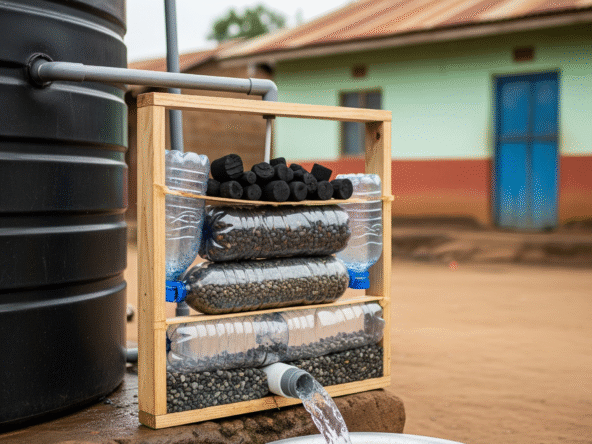Water delivery systems are essential for every home, rental unit, or farm in Kenya. One of the biggest decisions in setting up such systems is choosing between gravity-fed systems and pumped systems. Each option comes with its own set of advantages depending on your terrain, water demand, and available infrastructure.
In this article, we compare the two systems across key factors like cost, pressure, reliability, and suitability helping you decide the best option for your property.
1. What Are Gravity-Fed Water Systems?
Gravity-fed systems move water using natural force water stored in a raised tank flows downward to taps or irrigation points due to elevation. These systems don’t require electricity or engines.
For a practical breakdown of layouts and parts, visit Gravity-Fed Tank Setups in Kenya.
2. How Do Pumped Water Systems Work?
Pumped systems rely on mechanical energy to move water from one point to another. Pumps may be electric, solar-powered, or petrol-driven, and are used to draw water from boreholes, underground tanks, or ground-level reservoirs to elevated storage or directly into buildings.
Explore options suited to rural and off-grid locations in Solar-Powered Water Pumps for Rural Tanks.
3. Comparison Table: Pump vs Gravity
| Feature | Gravity-Fed System | Pumped System |
|---|---|---|
| Installation Cost | Lower (especially if tank is elevated) | Higher (pump purchase, wiring, plumbing) |
| Operating Cost | None | Medium to high (fuel or electricity) |
| Water Pressure | Depends on tank height | Controlled and adjustable |
| Reliability | High (if tank remains full) | Depends on pump condition and power availability |
| Maintenance | Minimal | Requires periodic servicing |
| Noise Level | Silent | Can be loud — see Pump Noise Reduction in Kenyan Homes |
| Ideal Use Cases | One-story homes, gravity-friendly plots | Borehole systems, flat land, multistory homes, irrigation setups |
4. When Gravity Systems Are Ideal
Choose gravity-fed systems if:
- Your home is a bungalow or single-story rental
- Your plot is located on a slope or raised ground
- You want low ongoing costs and minimal maintenance
- Water pressure needs are moderate
Build your own elevated support with guidance from DIY Tank Stand Construction in Kenya.
5. When Pumps Make More Sense
Go with a pumped system when:
- You have a borehole, well, or underground tank
- Your land is flat with no height advantage
- You require high-pressure flow for showers, sprinklers, or long piping
- You are using automation tools like Tank Refill Automation
This setup gives you control and can work with timers or sensors to optimize water use.
6. Hybrid System: The Best of Both Worlds
Many homeowners now combine both systems for efficiency and flexibility:
- Use a pump to transfer water to an elevated tank
- Let gravity distribute water to taps and toilets
- Add a booster pump only for areas where high pressure is essential
This combination reduces running costs while ensuring consistent supply and performance. Explore such hybrid designs in Off-Grid Water Planning for Farms.
Both pump-based and gravity-fed water systems have unique strengths. Gravity-fed setups offer simplicity, silence, and low maintenance, while pumps provide pressure and flexibility in design.
The best choice depends on your plot layout, budget, and water usage habits. For long-term sustainability, many Kenyans are opting for hybrid models that combine both approaches to get the best of each system.


